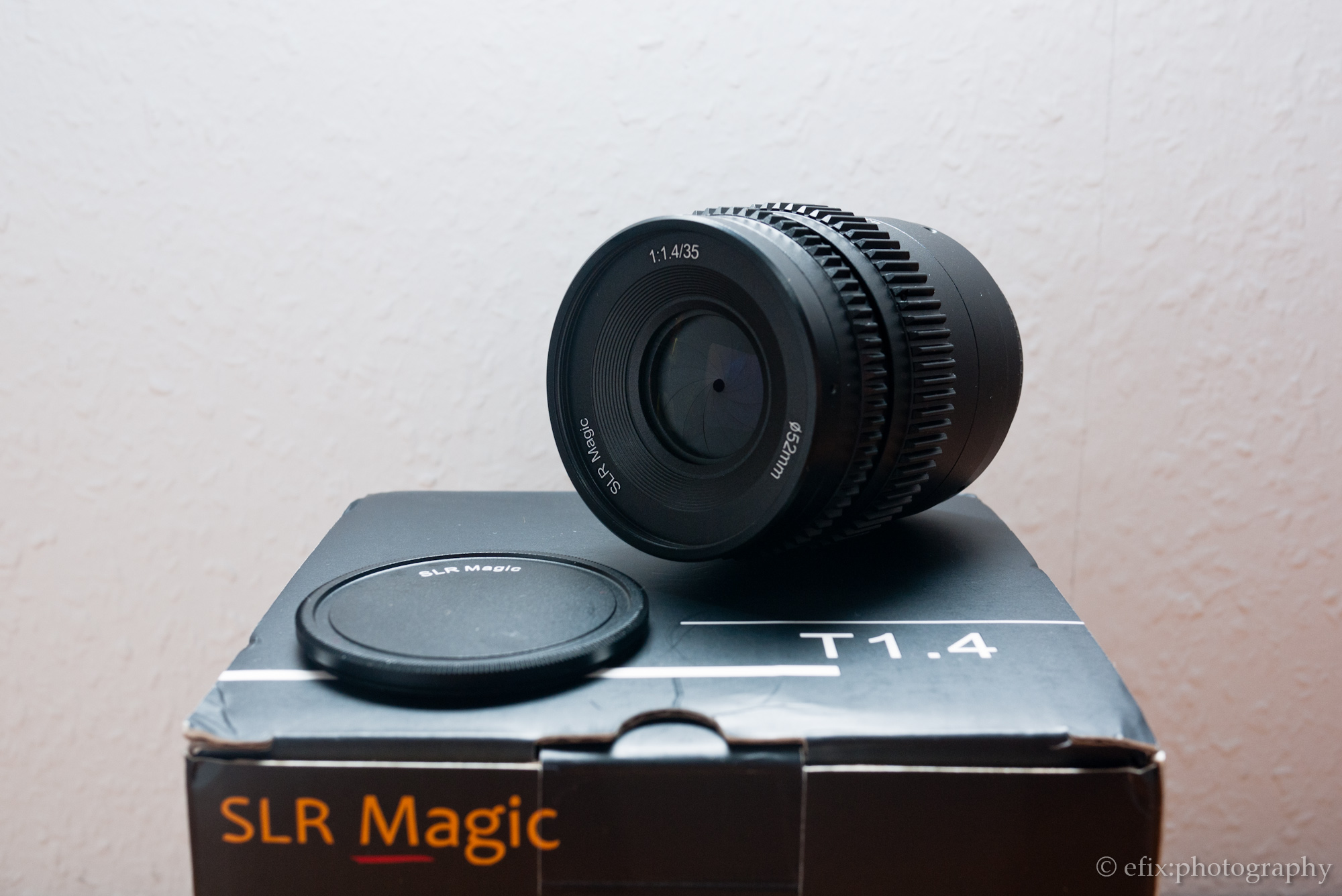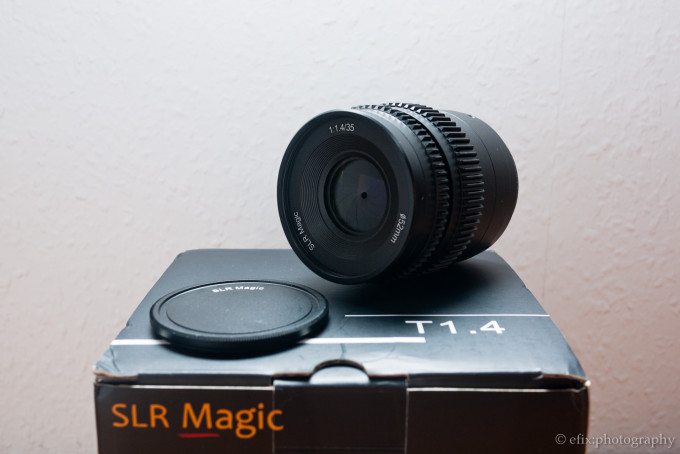At photokina 2012 in September of last year, SLR Magic showed off some of their latest lens designs for mirrorless systems. Among these was the 35mm T1.4 for Micro Four Thirds, Sony NEX and Fuji X. We have recently gotten hold of a review unit of this lens for the Micro Four Thirds system and I was able to spend some time with it and to collect some first impressions.
The 35mm T1.4 is designated as a cine lens, hence the T rating instead of the traditional f-stop rating. For those unfamiliar with these terms, the f-stop rating indicates the physical aperture size of the lens, i.e. focal length divided by aperture diameter. The T rating indicates the actual light transmitting capabilities of the lens, which is important for video productions that often switch lenses but need to maintain a constant image brightness. T1.4 means that the amount of light transmitted through the lens is identical to a virtual f1.4 lens with no light loss. However, since every lens construction comes with a slight loss of light, the actual aperture of a T1.4 lens is slightly larger than that of an f1.4 lens. The crucial point is that T1.4 is always the same in terms of brightness, whereas the actual brightness of an f1.4 lens may vary between different models.
Tech Specs
These are taken directly from Adorama’s product page:
| Focal Length (35mm equivalent) | 70mm |
| Minimum Focus Distance | 11.81″ / 0.3m |
| Minimum Aperture | F/16 |
| Length | 2.76″ / 70.3mm |
| Weight | 13.05″ / 370g |
| Filter Size | 52mm |
What’s in the box?
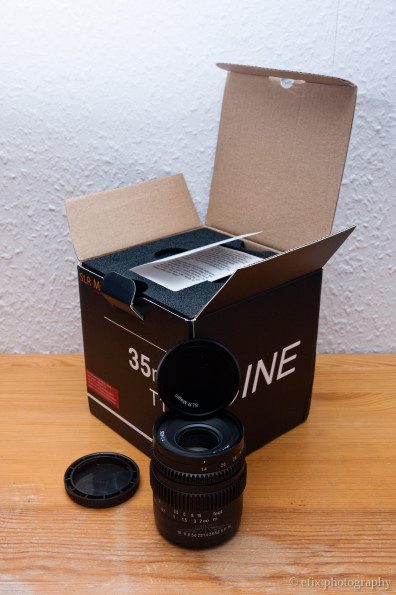
The 35mm T1.4 comes in a sturdy cardboard box that contains a foam casing which protects the lens during transport. Inserted into the top part of the foam casing is a small printed card that describes how to use the lens on your Micro Four Thirds camera. The lens itself has the front and rear caps installed (more on the front cap later).
Ergonomics
Because the 35mm T1.4 is intended for use by videographers, it is equipped with gears around the focusing and aperture rings that allow the use of a follow focus system. The rough, corrugated structure of the gears is quite convenient also for still photography, as they’re easy to grip and operate, and hard to accidentally slip off from.
Both the focusing and aperture rings are easy to turn, yet well dampened. This, too, makes them comfortable to operate. The lens’s relative size and heft help with holding the camera steady, as there is enough space to stabilise the camera with your left hand on the lens, while your right hand holds the camera itself. Add to that an electronic viewfinder, and it’s tough to get shaky pictures with this combo.
Build Quality
Build quality of this lens — as with all SLR Magic lenses I’ve handled so far — can only be described as very good. I already mentioned that the 35mm T1.4 is hefty — this is because the whole body is made from solid metal. No plastic anywhere. This gives a very solid and sturdy feel to it. The aperture and focus rings also feel very solid and are well dampened. The overall feel of this lens is one of solid craftsmanship.
One thing that is particular noteworthy is the front cap the lens comes with. Unlike most lenses that come with plastic caps that snap into place in the filter ring, the SLR Magic 35mm T1.4 comes with a solid metal cap that actually screws into the filter ring. The advantage: it cannot get lost (unless you drop it) and it provides extra protection for the front lens element. I only wish all lenses came with lens caps that sturdy.
Focusing
Focusing the 35mm T1.4 is very easy thanks to the well dampened yet easy to turn focus ring. From close focus to infinity the lens rotates by approx. 130°, which is about two twists of the focusing ring (depending on the size of your fingers and/or your ability to contort yourself.) This is just about right, as focusing does not take an eternity while still being very precise. Personally, I have had no problems achieving spot-on focus with this lens, even wide open. Using a high-resolution EVF with additional magnification helps a lot, though.

Ease of Use
What can I say? This is an all manual lens, and it behaves like all manual lenses I’ve used so far. Thanks to its properties described in the three paragraphs above, operation is smooth and easy-going. Pretty much everything about this lens is perfect. Unless, of course, this is the first manual lens you ever used — in that case, the learning curve might be a little steeper.
Image Quality
This is only a first look, so I haven’t yet gotten completely to the bottom of this lens. However, from my preliminary tests, I can say that image quality seems to be all but excellent. To be honest, when I opened up the first pictures in Lightroom, I was pretty blown away. I had not expected the results to be that good. My first thought was, “this looks like I took it with my Leica M8 and 50mm Zeiss Planar!” It’s really that good.

Of course the lens shows some slight softness wide open, but beneath the slight glow there is enough micro contrast to convey a lot of fine detail. Stopped down things improve of course, and at T5.6 this lens is as sharp as any other lens. Contrast is also slightly lower wide open as it is stopped down, but again it is just the right amount not to produce flat looking images, but to leave enough headroom for post-processing without loss of detail in the shadows and highlights.
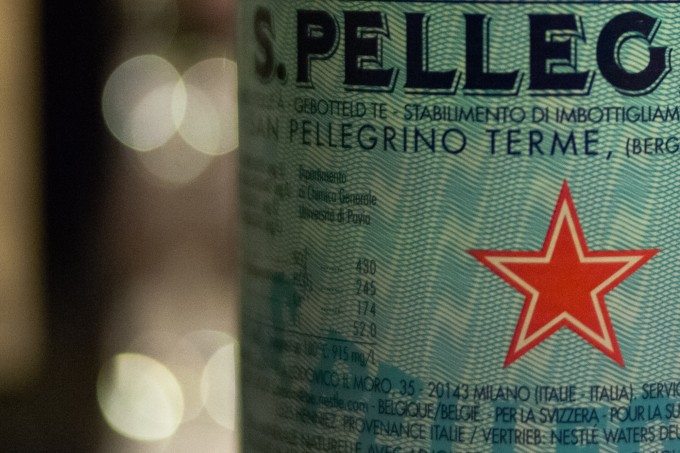

Finally, the bokeh, i.e. the quality of the rendering of out-of-focus areas, is very pleasing, with soft transitions from sharp to unsharp, and no apparent double lining in high contrast background objects. All in all, the bokeh is very gentle, and at T1.4 this lens works very well for subject isolation as, for example, in portraiture.
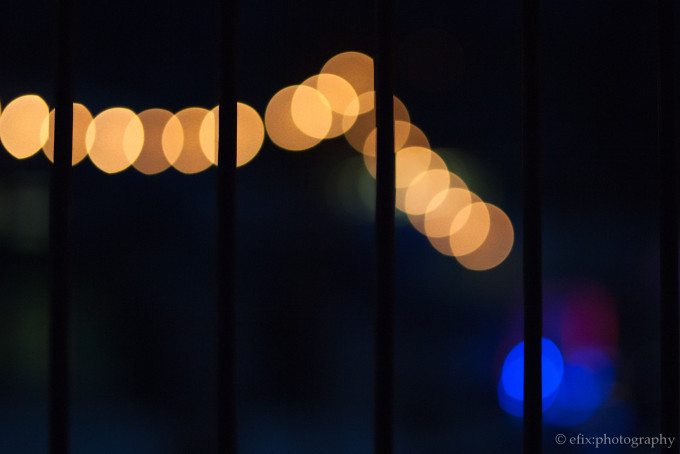
First Impressions
It seems that SLR Magic have really hit the nail with this one. The 35mm T1.4 has excellent build quality, excellent optical qualities from what I can judge so far, and comes in at a very reasonable price ($349 at Adorama) for a lens this good. There is really no reason not to buy this lens, if you care for manual glass at all. The only gripe I’ve had with it is that its equivalent focal length of 70mm on Micro Four Thirds is a bit odd — neither wide enough to be a normal lens, nor long enough to really be a short tele or portrait lens. I reckon that this lens makes a lot more sense on an NEX or Fuji X camera.

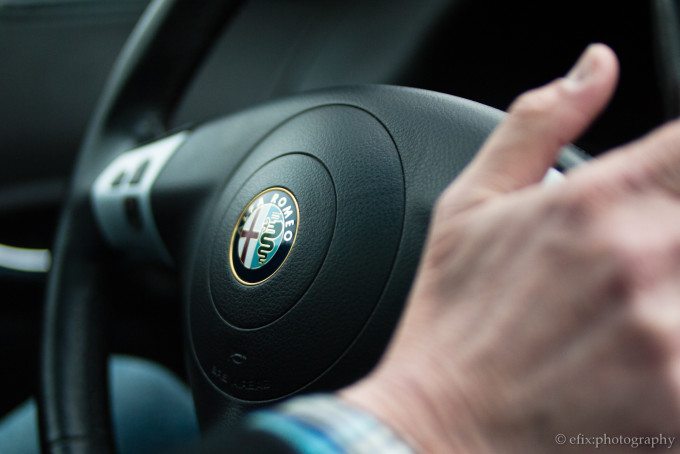



Please Support The Phoblographer
We love to bring you guys the latest and greatest news and gear related stuff. However, we can’t keep doing that unless we have your continued support. If you would like to purchase any of the items mentioned, please do so by clicking our links first and then purchasing the items as we then get a small portion of the sale to help run the website.


